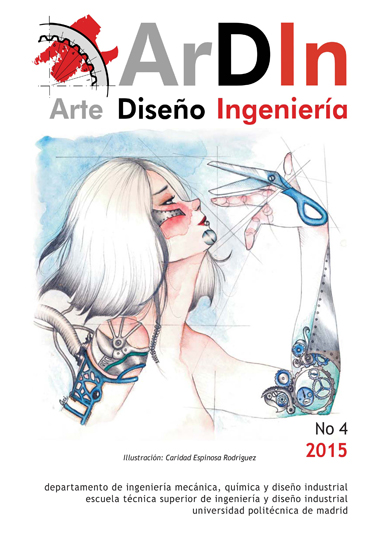La Maqueta como herramienta didáctica del Diseño Industrial = Model as teaching tools of industrial design
Keywords:
Maqueta, Diseño industrial, Materiales y Técnicas, Models, Industrial Design, Materials and TechniquesAbstract
Resumen
En el Diseño Industrial las maquetas son unas herramientas didácticas fundamentales porque permiten conocer los objetos tridimensionales de una manera sencilla e intuitiva. Con la ayuda de estos instrumentos se puede conocer el paso intermedio entre la representación de los objetos en dos dimensiones ysu materialización en las tres dimensiones con el fin de analizar el volumen desde todos los puntos de vista. Por otro lado, la amplia gama de materiales y técnicas que pueden emplearse en la realización de las maquetas hacen que esta disciplina sea imprescindible en cualquier programa de Diseño Industrial.
En este sentido, como ejemplo práctico del empleo de las maquetas en el Diseño Industrial, se desarrolló una actividad en la “I Feria el Aprendiz de Ingeniero” promovida por la Universidad Politécnica de Madrid que tenía como objetivo fomentar las vocaciones tecnológicas entre los estudiantes de secundaria y que se concluyó con un elevado éxito.
Abstract
In the Industrial Design scale models are fundamental teaching tools that allow to know the three-dimensional objects in a simple and intuitive way. With the help of these tools can make the intermediate step between the representation of objects in two dimensions and three dimensions in order to analyze the volume from all points of view. Furthermore, the wide range of materials for use in making models makes them a teaching to be considered in any course of industrial design tools. Finally, as a practical example of the use of models in Industrial Design an activity promoted by the Polytechnic University of Madrid which aimed to promote technological vocations among high school students was developed. This activity ended with a high success.
Downloads
Downloads
Published
Issue
Section
License
ArDIn does not charge authors for processing or publishing an article and provides immediate Open Access to its content. All content is available free to the user or their institution. Users are permitted to read, download, copy, distribute, print, search or link to the full text of articles, or use them for any other lawful purpose, without prior permission from the publisher or author. This is in accordance with the BOAI definition of open access.
- Authors retain the copyright and grant to the journal the right to a Creative Commons attribution / Non-Commercial / Non-Derivative 4.0 International (CC BY NC ND) License that allows others to share the work with an acknowledgement of authorship and non-commercial use.
- Authors may separately establish additional agreements for the non-exclusive distribution of the version of the work published in the journal (for example, placing it in an institutional repository or publishing it in a book).
Unless otherwise indicated, all contents of the electronic edition are distributed under a Creative Commons license.













